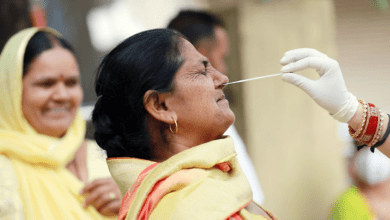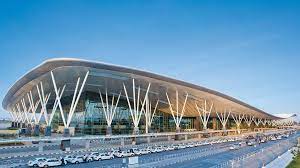Aditya L1, ISRO’s first mission to study the sun, completes its third earth-bound maneuver successfully
The Aditya L1 spacecraft, which is the first mission of the Indian Space Research Organization to explore the Sun, successfully completed its third earth-bound maneuver early on Sunday. The mission was carried out by ISRO’s Telemetry, Tracking and Command Network (ISTRAC).
“From ISTRAC, Bengaluru, the third Earth-bound movement (EBN#3) is successfully carried out. During this operation, the satellite was monitored by ISRO’s ground stations in Mauritius, Bengaluru, SDSC-SHAR, and Port Blair, according to a post on social networking site X by ISRO.
It said that the new orbit was 296 km x 71767 km in size.
On September 3 and 5, respectively, the first and second earth-bound movements were carried out successfully.On September 15, the spacecraft will perform one last earthbound orbital maneuver before entering the transfer orbit toward the Lagrange point L1.
The maneuvers must be carried out during the spacecraft’s 16-day orbit of the earth, which is when it will achieve the velocity needed for its subsequent voyage to L1.
ABOUT ADITYA L1 FROM ISRO
The first space-based observatory from India, called Aditya-L1, will observe the Sun from a halo orbit around the first Sun-Earth Lagrangian point (L1), which is around 1.5 million kilometers from the planet.
On September 2, Aditya-L1 was successfully launched by ISRO’s Polar Satellite Launch Vehicle (PSLV-C57) from the Satish Dhawan Space Center’s Second Launch Pad in Sriharikota.
The space agency had said shortly after the launch that the spacecraft would take around 127 days to reach its planned orbit at the L1 point.
An benefit of a spacecraft positioned in a halo orbit around the L1 point, according to ISRO, is that it may see the Sun continually without being obscured by clouds or by eclipses. This will make it easier to track solar activity and how it affects space weather in real time.
Seven scientific payloads, including those from the Indian Institute of Astrophysics in Bengaluru and the Inter-University Centre for Astronomy and Astrophysics in Pune, were created domestically by the ISRO and national research institutions.
Using electromagnetic, particle, and magnetic field detectors, the payloads will study the sun’s corona, chromosphere, and outermost regions.
Four payloads will use the unique vantage point L1 to see the Sun directly, while the other three will conduct in-situ particle and field investigations at the Lagrange point L1, giving crucial information on the propagation of solar dynamics in the interplanetary medium.
The most important data to comprehend the issue of coronal heating, coronal mass ejection, pre-flare and flare activities and their features, dynamics of space weather, and propagation of particles and fields is anticipated to be provided by the Aditya L1 payloads.
Five Lagrangian points, or parking regions, where a tiny object tends to remain in place, are said to exist between the Earth and the Sun.
Joseph-Louis Lagrange, an Italian-French mathematician, is honored by having his work be named after him. Spacecraft may utilize these locations in space to stay there for longer periods of time while using less fuel.
The gravitational attraction of the Sun and the Earth, which are at a Lagrange point, equals the centripetal force needed for a tiny object to move with them.







